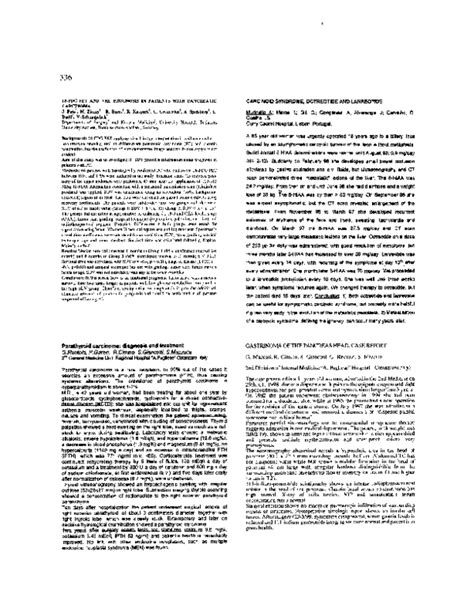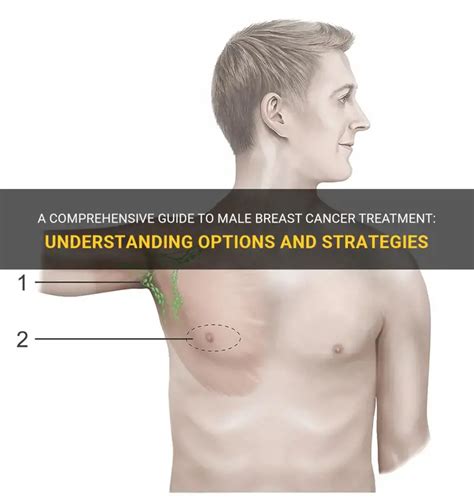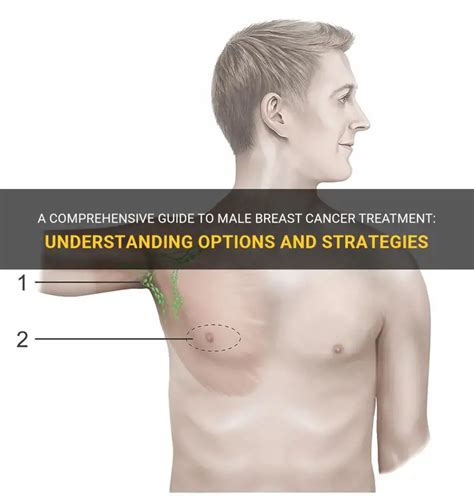Intro
Breast cancer is often perceived as a disease that affects women, but it can also occur in men. Although the incidence of breast cancer in men is relatively low, it is essential to raise awareness about this condition to promote early detection and treatment. According to the American Cancer Society, about 1 in 833 men will be diagnosed with breast cancer in their lifetime. This statistic highlights the importance of understanding the risks, symptoms, and treatment options for breast cancer in men.
The risk of developing breast cancer increases with age, and most cases of male breast cancer are diagnosed in men over the age of 60. However, it is crucial for men of all ages to be aware of the signs and symptoms of breast cancer, including a lump or thickening in the breast, changes in the skin or nipple, and discharge or bleeding from the nipple. By recognizing these symptoms, men can seek medical attention promptly, which can significantly improve their chances of survival.
Male breast cancer is often diagnosed at a later stage than female breast cancer, which can make treatment more challenging. Therefore, it is vital for men to be proactive about their health and discuss any concerns or symptoms with their doctor. Regular check-ups and screenings can help detect breast cancer early, and there are also steps that men can take to reduce their risk of developing the disease. A healthy lifestyle, including a balanced diet and regular exercise, can help minimize the risk of breast cancer, as well as other health conditions.
Understanding Male Breast Cancer

Male breast cancer is a type of cancer that develops in the breast tissue of men. It is caused by the uncontrolled growth of abnormal cells in the breast, which can form a tumor. There are several types of breast cancer that can affect men, including ductal carcinoma, lobular carcinoma, and inflammatory breast cancer. Each type of breast cancer has distinct characteristics and treatment options, and understanding the specific type of cancer is essential for developing an effective treatment plan.
The symptoms of male breast cancer can vary, but common signs include a lump or thickening in the breast, changes in the skin or nipple, and discharge or bleeding from the nipple. Men may also experience pain or tenderness in the breast, which can be a symptom of breast cancer. However, it is essential to note that many breast lumps are benign, and a diagnosis of breast cancer can only be confirmed through a biopsy.
Risk Factors for Male Breast Cancer
There are several risk factors that can increase a man's likelihood of developing breast cancer. These include: * Family history: Men with a family history of breast cancer, particularly in first-degree relatives, are at higher risk of developing the disease. * Genetic mutations: Certain genetic mutations, such as BRCA2, can increase the risk of breast cancer in men. * Radiation exposure: Men who have been exposed to radiation, particularly at a young age, are at higher risk of developing breast cancer. * Hormonal imbalance: An imbalance of hormones, particularly an excess of estrogen, can increase the risk of breast cancer in men. * Obesity: Being overweight or obese can increase the risk of breast cancer in men, as excess fat tissue can produce estrogen.Diagnosis and Treatment of Male Breast Cancer

Diagnosing male breast cancer typically involves a combination of physical exams, imaging tests, and biopsies. A doctor may perform a physical exam to check for any lumps or abnormalities in the breast, and imaging tests such as mammograms or ultrasounds may be used to visualize the breast tissue. A biopsy, which involves removing a sample of tissue from the breast, is usually necessary to confirm a diagnosis of breast cancer.
Treatment options for male breast cancer depend on the type and stage of the disease, as well as the individual's overall health. Surgery, radiation therapy, and chemotherapy are common treatments for breast cancer in men. In some cases, hormone therapy may also be used to treat breast cancer, particularly if the cancer is hormone-receptor-positive.
Treatment Options for Male Breast Cancer
The treatment options for male breast cancer include: * Surgery: Surgery is often the primary treatment for male breast cancer, and may involve removing the tumor and some surrounding tissue, or removing the entire breast. * Radiation therapy: Radiation therapy uses high-energy rays to kill cancer cells, and may be used after surgery to reduce the risk of recurrence. * Chemotherapy: Chemotherapy uses drugs to kill cancer cells, and may be used to treat breast cancer that has spread to other parts of the body. * Hormone therapy: Hormone therapy may be used to treat breast cancer that is hormone-receptor-positive, and works by blocking the production of hormones that fuel the growth of cancer cells.Living with Male Breast Cancer

Being diagnosed with male breast cancer can be a challenging and emotional experience. However, with the right treatment and support, many men are able to manage their symptoms and live a fulfilling life. It is essential for men with breast cancer to have a strong support system, including family, friends, and healthcare professionals.
Men with breast cancer may experience a range of emotions, including anxiety, depression, and fear. However, there are many resources available to help men cope with their diagnosis and treatment. Support groups, counseling, and online forums can provide a sense of community and connection, and help men feel less isolated.
Coping with Male Breast Cancer
Coping with male breast cancer requires a comprehensive approach that addresses the physical, emotional, and practical aspects of the disease. Some strategies for coping with male breast cancer include: * Seeking support: Connecting with others who have experienced breast cancer can be a powerful way to cope with the disease. * Practicing self-care: Engaging in activities that promote relaxation and stress reduction, such as meditation or yoga, can help manage symptoms and improve overall well-being. * Staying informed: Learning about breast cancer and its treatment options can help men feel more in control and empowered. * Focusing on the positive: Focusing on the positive aspects of life, such as relationships, hobbies, and personal achievements, can help men stay motivated and optimistic.Preventing Male Breast Cancer

While there is no sure way to prevent male breast cancer, there are several steps that men can take to reduce their risk of developing the disease. Maintaining a healthy weight, exercising regularly, and eating a balanced diet can help minimize the risk of breast cancer, as well as other health conditions.
Avoiding exposure to radiation and certain chemicals, such as those used in the manufacturing of plastics and pesticides, can also help reduce the risk of breast cancer. Additionally, men who have a family history of breast cancer or other risk factors may want to consider genetic testing to determine their risk of developing the disease.
Reducing the Risk of Male Breast Cancer
Reducing the risk of male breast cancer requires a proactive approach that incorporates healthy lifestyle habits and awareness of potential risk factors. Some strategies for reducing the risk of male breast cancer include: * Maintaining a healthy weight: Being overweight or obese can increase the risk of breast cancer, so maintaining a healthy weight through a balanced diet and regular exercise is essential. * Avoiding radiation exposure: Avoiding exposure to radiation, particularly at a young age, can help reduce the risk of breast cancer. * Eating a balanced diet: Eating a diet rich in fruits, vegetables, and whole grains can help minimize the risk of breast cancer, as well as other health conditions. * Staying informed: Learning about breast cancer and its risk factors can help men make informed decisions about their health and take steps to reduce their risk of developing the disease.Conclusion and Next Steps

Male breast cancer is a serious disease that requires prompt attention and treatment. By understanding the risks, symptoms, and treatment options for breast cancer in men, individuals can take steps to reduce their risk of developing the disease and improve their chances of survival. It is essential for men to be proactive about their health and discuss any concerns or symptoms with their doctor.
If you or someone you know has been diagnosed with male breast cancer, there are many resources available to provide support and guidance. From online forums and support groups to counseling and medical care, there are many ways to cope with the physical, emotional, and practical aspects of the disease.
What are the symptoms of male breast cancer?
+The symptoms of male breast cancer include a lump or thickening in the breast, changes in the skin or nipple, and discharge or bleeding from the nipple.
How is male breast cancer diagnosed?
+Male breast cancer is typically diagnosed through a combination of physical exams, imaging tests, and biopsies.
What are the treatment options for male breast cancer?
+Treatment options for male breast cancer include surgery, radiation therapy, chemotherapy, and hormone therapy.
We hope this article has provided you with a comprehensive understanding of male breast cancer, including its risks, symptoms, and treatment options. If you have any questions or concerns, please don't hesitate to reach out to a healthcare professional or a support organization for guidance and support. Remember, early detection and treatment are key to improving outcomes for men with breast cancer. Share this article with others to help raise awareness about this important health issue.
